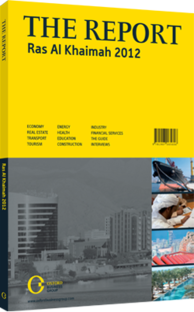Taking to the skies: Plans in place to make the aviation segment more competitive
With passenger traffic on the rise and new routes earmarked for its flag carrier, Ras Al Khaimah is strengthening its foothold in the regional aviation market despite facing tough competition from airlines in the other emirates. The carrier, RAK Airways, has faced a challenging few years, having first been grounded at the height of the global economic recession and then, following a period of restructuring, returning to the skies in mid-2010 with modified services and a reduced number of routes.
FINDING A NICHE: Since then, the airline has worked on building passenger numbers, filling 250,000 seats in 2011, while gradually expanding its flight list to include destinations in Africa, the Middle East and Asia. More recently, RAK Airways announced it was looking to extend its routes to Europe and increase services to India and Pakistan. The airline now plans to have 10 aircraft operating on 25 routes by 2015.
Industry analysis service provider the Centre for Asia Pacific Aviation (CAPA) said RAK Airways has decided to position itself somewhere between the no-frills low-cost carriers (LCCs), which are fast gaining a foothold in the region, and full-service airlines. This clearly shows that the carrier has moved towards a hybrid business model, according to CAPA.
RAK Airways hopes that its bid to stake a claim in both markets will cater to a wider audience and lead to a higher number of filled seats on its flights. However, the carrier appears to be aware of the risk of falling between the two business models while operating in a highly competitive environment.
PASSENGERS: The airline’s new acting CEO, John Brayford, has conceded that LCCs pose tough competition for RAK Airways but is confident that the carrier’s strategy places it in a strong position to drive up passenger numbers. “The budget airlines are extremely competitive and the low-fare offering has proven very successful with customers throughout the region,” Brayford said in an interview with local media in late May 2012. “They are also very agile and are quick to respond to changing market conditions. However, our customer proposition is to offer better overall value for money with added benefits while retaining a competitive price.”
The national carrier’s move to introduce additional routes, boosted by the emirate’s efforts to market itself as a tourist and business destination, has also led to a significant rise in passenger numbers at RAK International Airport. Data issued by the airport’s operators show that its passenger traffic increased by 58.5% in the first three months of 2012, well exceeding previous expectations.
AIRPORT POSITIONING: Announcing the first-quarter results on May 12, 2012, the airport’s director, Andrew Gower, said that new carriers looking to expand their routes in the region would be attracted by the hub’s location and proximity to a sizeable potential customer base. “We are only 20-45 minutes from Ajman, Umm Al Quwain and Fujairah, with a combined population of approximately 900,000. Because of this, RAK International Airport is a very attractive proposition for the airlines,” he said.
With plenty of take-off and landing slots still available, RAK’s airport has an advantage over some regional centres, many of which are struggling with capacity constraints. The airport’s management announced a major upgrade at the end of April 2012, planning to increase passenger handling capacity from 500,000 to 2m annually by 2015. “The recent and ongoing upgrades of the RAK International Airport facilities will be encouraging for enhancing cargo capacities and increasing passenger flights due to the addition of new runways and new terminals,” said Omar Jahameh, the CEO of RAK Airways.
The emirate’s drive to boost investment in the national carrier and to further develop on-the-ground infrastructure show a clear commitment to expansion. By promoting its new services, capacity and location, the emirate should be able to find a niche in the Gulf’s competitive aviation industry.
You have reached the limit of premium articles you can view for free.
Choose from the options below to purchase print or digital editions of our Reports. You can also purchase a website subscription giving you unlimited access to all of our Reports online for 12 months.
If you have already purchased this Report or have a website subscription, please login to continue.

